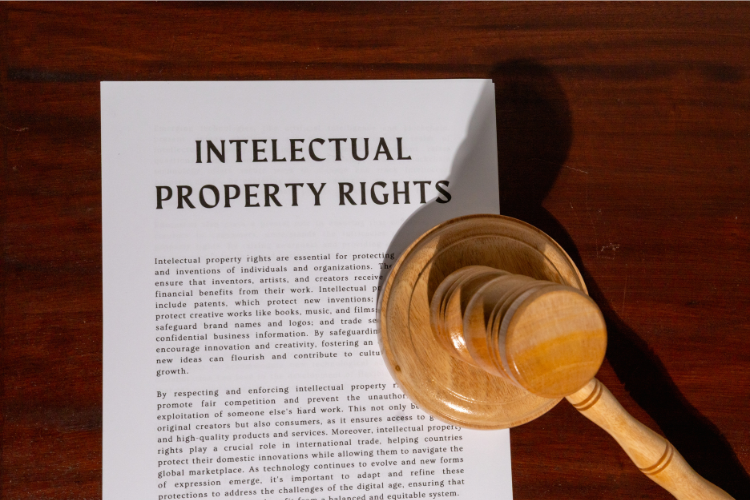Introduction
Amazon’s Patent Evaluation Express (APEX) program is an innovative, streamlined approach to addressing patent disputes on the platform. Tailored for patent holders who seek a quicker and more affordable resolution than traditional litigation, APEX allows them to tackle potential infringement issues directly within Amazon. A neutral third-party evaluator oversees the process, enabling both the patent holder and the seller to achieve a resolution efficiently without requiring extensive legal proceedings. Let’s dive into how the APEX program operates and why it’s a valuable tool for protecting intellectual property on Amazon.
Understanding Patent Eligibility for APEX
The APEX program is specifically designed for utility patents, making it a suitable option for patents that cover the functional aspects of products rather than ornamental designs. However, only certain types of utility patents qualify. The program excludes patents with very technical claims, such as those describing complex internal mechanisms of electronic devices, ensuring the process remains manageable and accessible.
With APEX, patent holders can assert a single claim from a U.S. utility patent against up to 20 product listings, or ASINs, at a time. This setup is ideal for quickly addressing multiple instances of alleged infringement as long as each product falls within Amazon’s criteria for evaluation.
How the Evaluation Process Works
The APEX evaluation relies on an impartial evaluator and a licensed patent attorney with expertise in relevant areas. This evaluator examines the case based on written briefs submitted by the patent holder and the accused Amazon seller. Their task is to determine whether the accused product is likely infringing on the patent claim at issue.
After reviewing the briefs, the evaluator provides a straightforward determination—either supporting or rejecting the infringement claim. This is a yes-or-no outcome, as the evaluator only assesses whether it’s more probable than not that infringement has occurred. Amazon remains a neutral facilitator, and the company does not interfere with decision-making. The typical duration for the APEX process is about seven weeks, allowing for a swifter outcome compared to court proceedings.
Steps for Patent Holders to Participate
To initiate the APEX process, patent holders must first register their brand on Amazon’s Brand Registry. Once registered, they can request APEX by submitting an agreement listing the ASINs of the products they believe infringe upon their patent. Amazon then reaches out to the accused sellers, inviting them to participate.
Amazon sellers have three weeks to respond to Amazon’s invitation. If a seller declines to participate, Amazon will remove the disputed listings from its platform, offering the patent holder a quick resolution. If the seller chooses to participate, both parties are notified, and Amazon assigns an impartial evaluator to review the case, officially beginning the APEX procedure.
Cost and Responsibilities of Both Parties
The patent holder and the accused Amazon seller must pay a $4,000 fee directly to the evaluator. This fee covers the evaluation costs, and the winning party is reimbursed.
The APEX process involves an exchange of briefs: the patent holder submits an initial argument within 21 days, after which the Amazon seller has 14 days to respond. If the patent holder wishes to submit a rebuttal, they have an additional 7 days. This structured timeline ensures the process remains efficient and progresses toward a timely conclusion.
Final Decision and Aftermath
Once all submissions are reviewed, the evaluator decides within two weeks. This decision is final, with no appeal option within the APEX program. If the ruling favors the patent holder, Amazon will remove the accused listings within ten business days, providing relief similar to an injunction in traditional legal settings.
After a successful outcome, patent holders can use the APEX case number in Amazon’s Brand Registry to request the removal of similar infringing listings without repeating the entire APEX process. This added layer of protection makes APEX a powerful tool for enforcing patent rights across multiple infringing products.
Potential Benefits and Drawbacks of the APEX Program
The APEX program provides several key benefits. It’s faster and significantly less expensive than going through litigation or arbitration, making it an appealing choice for smaller businesses. The process is also confidential, protecting the reputations of both parties and limiting public exposure.
However, APEX does have limitations. One downside is the possibility of a declaratory judgment action by accused sellers. In certain jurisdictions, sellers may counter an APEX claim by seeking a declaratory judgment in their district.
Personal Jurisdiction Risk for Patent Owners
Recent court decisions have clarified that initiating an APEX proceeding may subject the patent owner to being sued in the seller’s home state. In particular, the SnapPower v. Lighting Defense Group case confirmed that using APEX can establish sufficient connection with the seller’s jurisdiction. That means patent owners, especially those based in different states or outside the U.S., could face declaratory judgment actions in unfamiliar or less favorable courts. If you’re considering APEX, it’s essential to factor in this potential legal exposure as part of your strategy.
Conclusion
For patent holders seeking to protect their innovations on Amazon, the APEX program is a practical tool that balances efficiency with affordability. It offers a streamlined alternative to lengthy court battles, enabling patent holders to address alleged infringement rapidly. However, they should weigh the benefits and potential challenges, particularly the risk of ending up in a less favorable jurisdiction due to a declaratory judgment action.
In an age where third-party listings are ever-increasing on Amazon, APEX provides a viable route for enforcing patent rights in an accessible and efficient manner. By understanding how the process works, patent holders can make informed decisions to protect their products and brands on Amazon’s expansive platform.
Important: The Amazon APEX program continues to evolve, and its rules, procedures, and legal consequences may change. This post is intended to provide general information as of June 2025 and does not constitute legal advice. Whether you’re thinking about using the APEX program to enforce your patent rights or you’re responding to an APEX notice you’ve received, it’s important to consult with a qualified IP attorney to understand the latest APEX procedures, your risks, and the best strategy for your unique situation. Here at BHW IP Law, we can help you assess your options and move forward with clarity and confidence.
Mr. Barceló represents high-technology companies in various intellectual property matters, including prosecution, litigation, transactions, and counseling involving patents, trademarks, copyrights, domain names, and trade secrets.
Mr. Barceló is a registered patent attorney out of the firm’s Newport Beach office in Orange County, California located at:
2901 West Coast Hwy
Suite 200
Newport Beach, CA 92663


